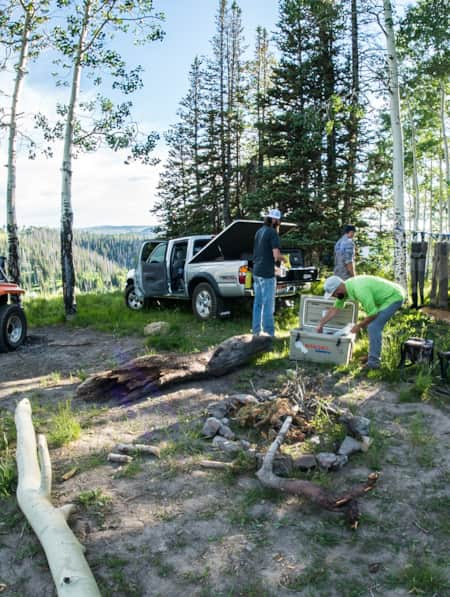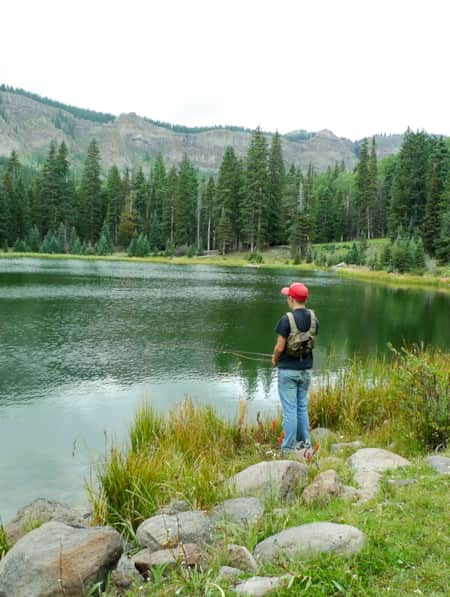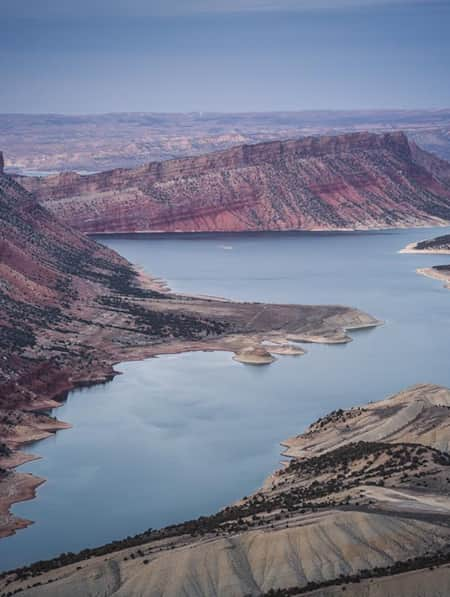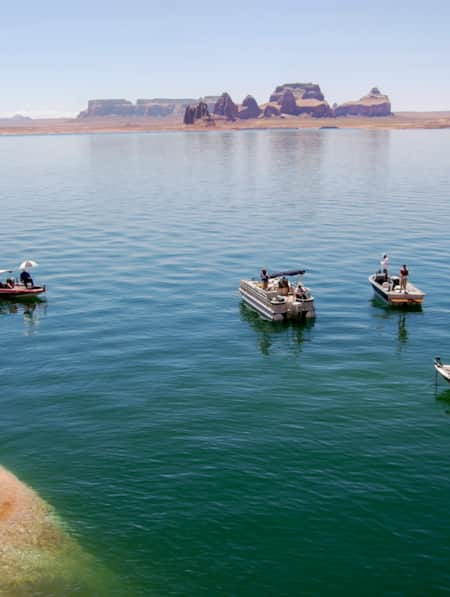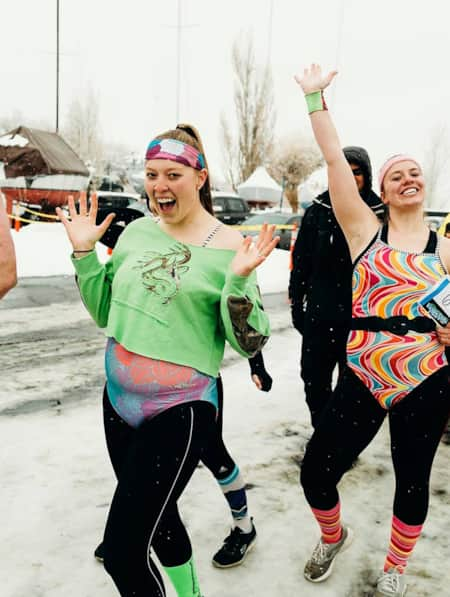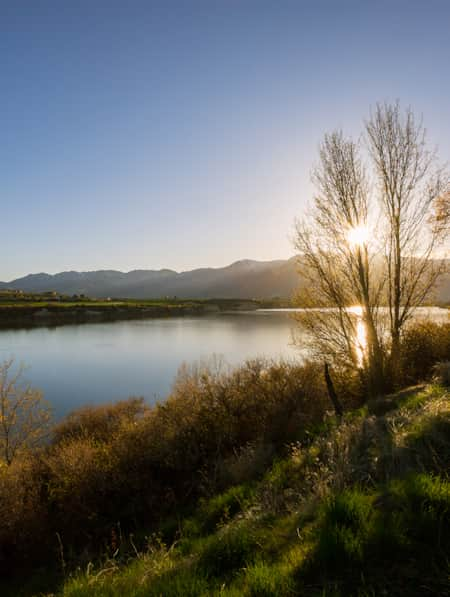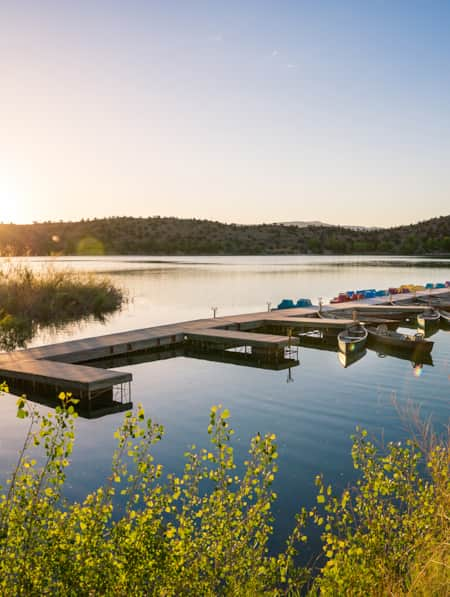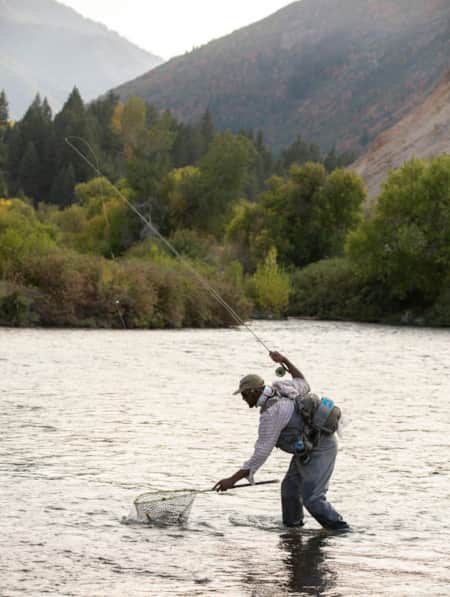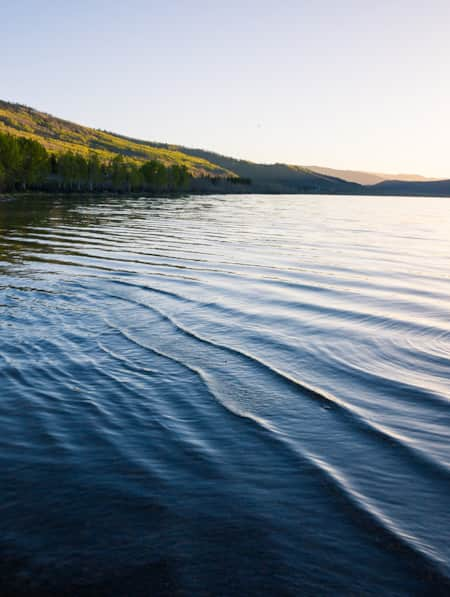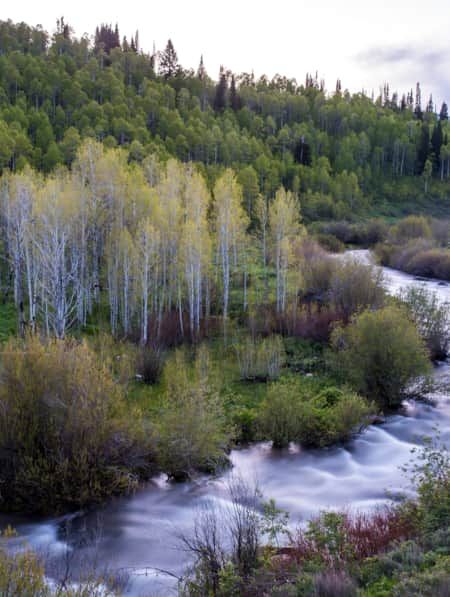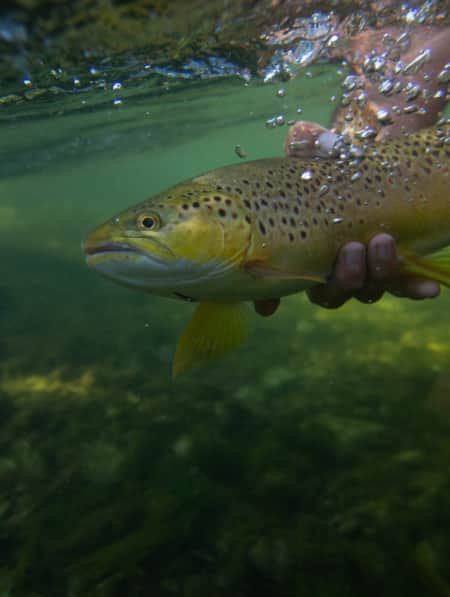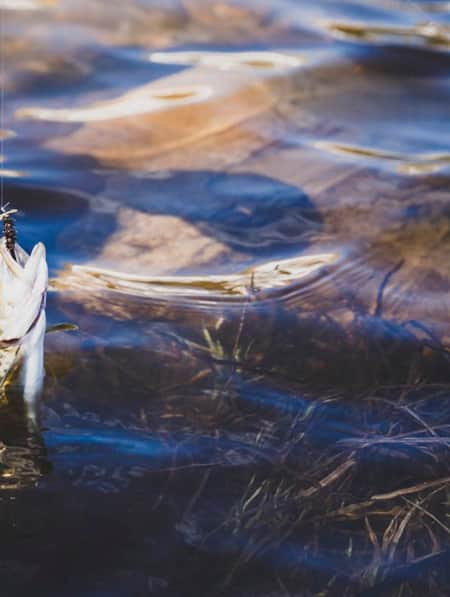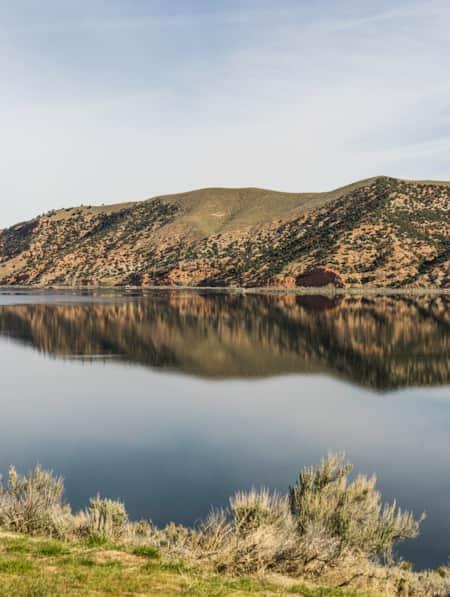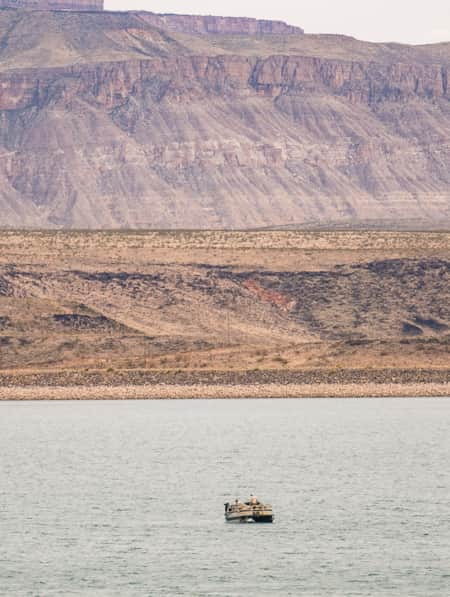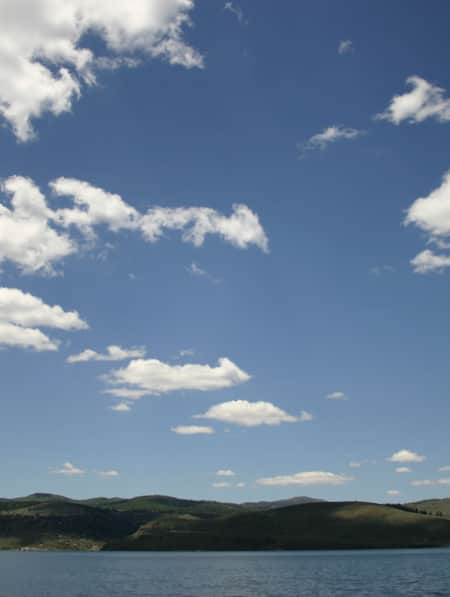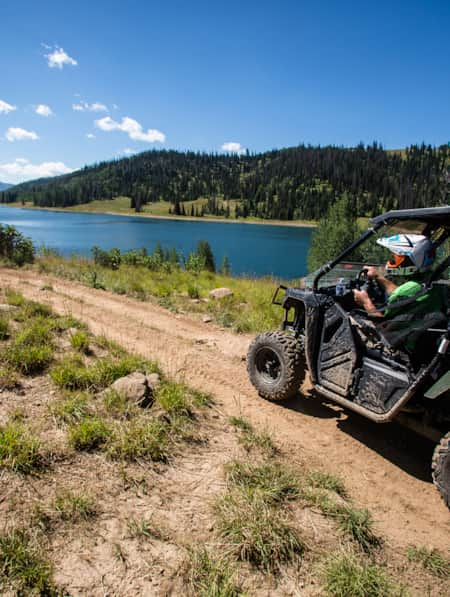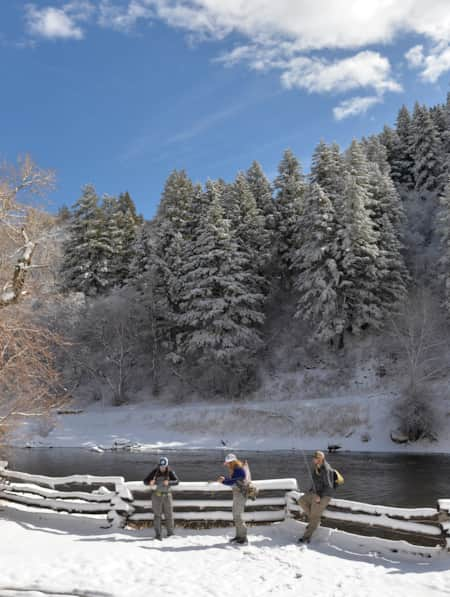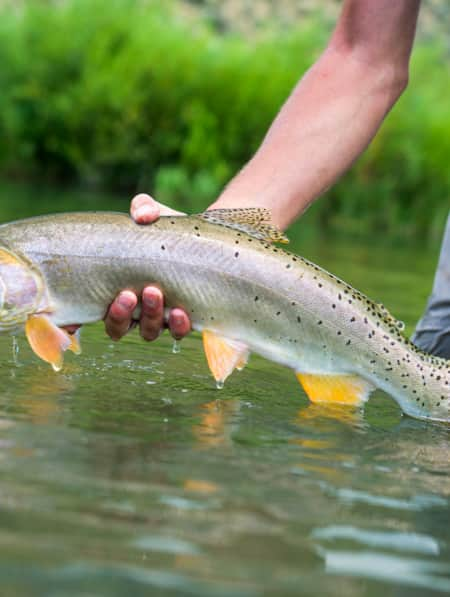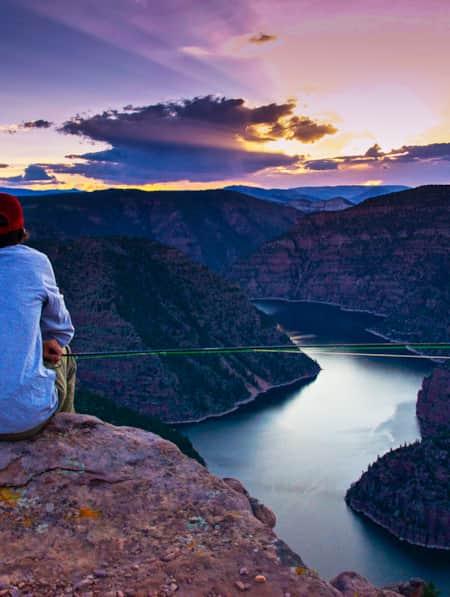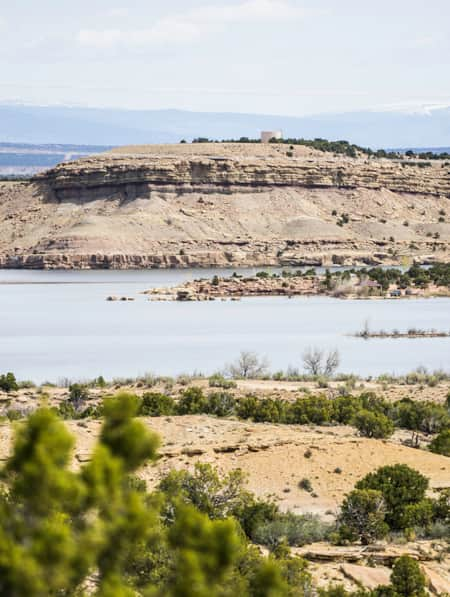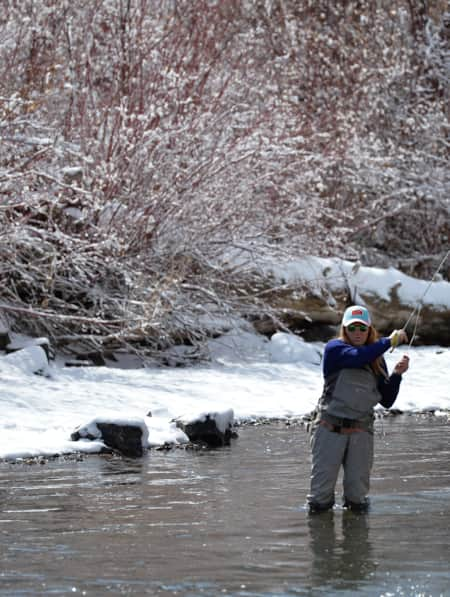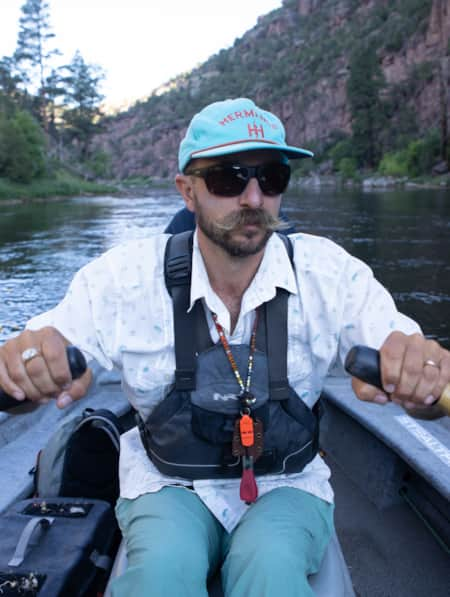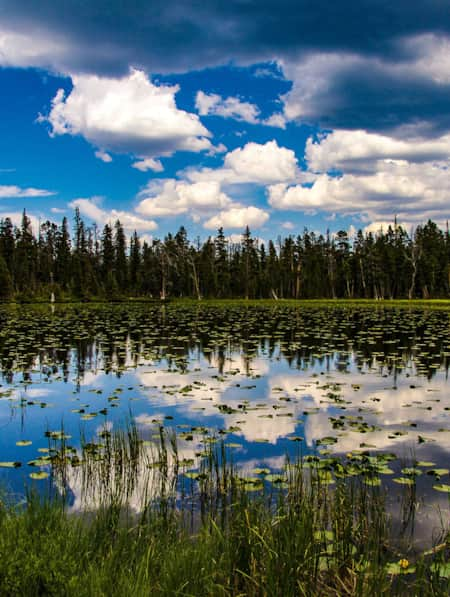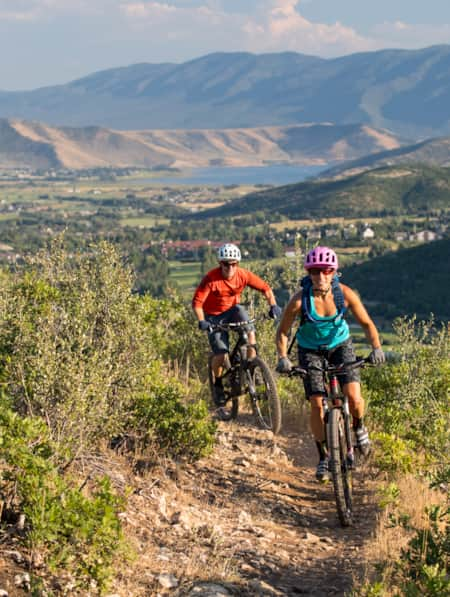In Search of the Yellowstone Cutthroat
Fishing for What Counts in Utah’s Remote Raft River Mountains
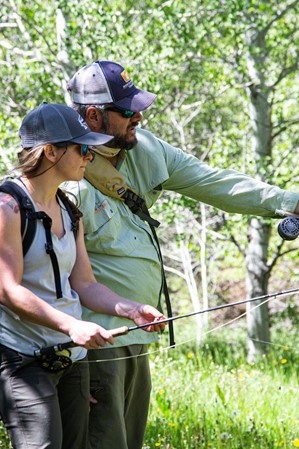
I can see the fish. Two, three, four are right there, golden-speckled children taunting me, swimming away. They slide away under a desert jungle canopy of shrubbery swaddling the creek here in Utah’s remote Raft River Mountains.
The only problem? The shrubs are so thick and the creek is so narrow — just one to two-foot-wide — I can’t cast. I need a wider opening to roll this cast.
This is the kind of fishing that makes me just want to sit on the side of the river and drink beer. Frustration immediately sets in. This isn’t gonna be a gimme. Did I even bring enough beer?
With my head spinning, I am already digging deep to find acceptance with defeat, but I’m here to accept challenges. With the shrubs so thick and the creek a measly one- to two-foot-wide, the first challenge I need to tackle is finding a wider opening to cast a line from my seven foot-rod. (Pro Tip: This rod is too big for this water and this shrubbery.)
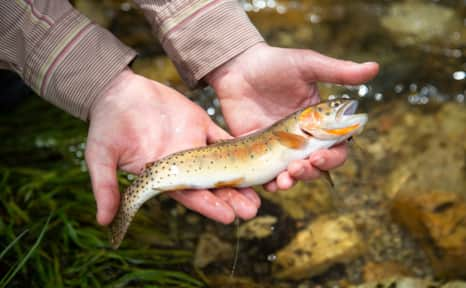
Yellowstone trout are now an “island-population.” The drainage they originated from — the Snake River — no longer flows to the Raft River Mountains and the trout are now trapped in the existing creeks.
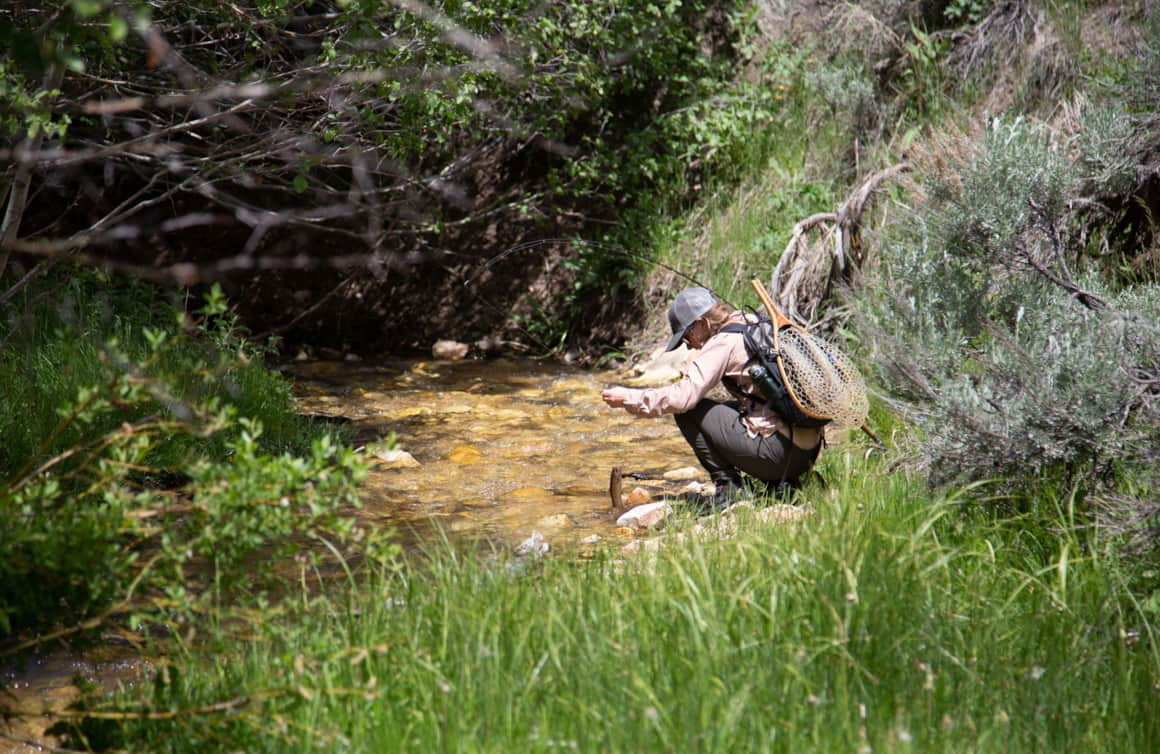
Because of the remote nature and small water of the Raft River Mountains, the Yellowstone is considered the most challenging catch of Utah’s Cutthroat Slam.
"I can see the fish. Two, three, four are right there, golden-speckled children taunting me, swimming away. They slide away under a desert jungle canopy of shrubbery swaddling the creek here in Utah’s remote Raft River Mountains."
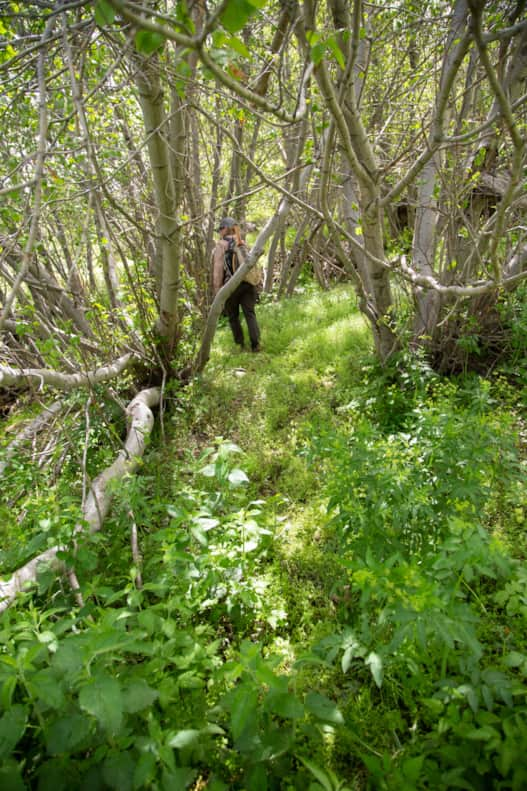
Here there are no signs of arrival, no instructions or waypoints, just a faint trail following a ditch of water.
Photo: Rosie Serago
The Toughest Catch
I’m here in pursuit of Utah’s Cutthroat Slam. Originating in 2016, the Slam is an angling adventure to help enthusiasts find, catch and release the Bonneville, Bear River, Colorado and Yellowstone cutthroat species.
The Slam’s purpose is to promote the value of native species and for anglers to explore new places they haven’t fished. Each participant signs up through the Utah Department of Natural Resources and pays a $20 fee; the cash funds the conservation efforts of Utah’s native fish.
Cutthroat trout are the only native trout to Utah. Yellowstone trout are now an “island-population.” The drainage they originated from — the Snake River — no longer flows to these mountains and the trout are now trapped in the existing creeks. Because of the remote nature and small water of this area, the Yellowstone is considered the most challenging catch of the Slam.
The Raft River Mountains are a destination in itself. Home to some of the oldest rocks in Utah, precambrian material thought to be 2.5 billion years old. This range is on the way to nowhere else in the state — unless perhaps you’re on a journey to circumnavigate Utah’s most remote West Desert areas of the Great Salt Lake or to peak bag Bull Mountain, which is the highest point in Box Elder County (Read: "Discovering Box Elder"). Only then will you find yourself in the most northwestern corner of the state in Utah’s Sawtooth National Forest.
After driving through a landscape of salt and cheatgrass, the mountains appear along with the town of Yost. Like the Uinta Mountains, this much smaller range runs east-west. Here’s where we say goodbye to Siri, and we partner up with our friend DeLorme. Once we turn into the mountains, the aspens and pines start to drown out the cell phone bars, and the temperature begins to drop. An oasis reveals itself in what some might call a barren wasteland.
Our drive was miscalculated a few times, like all true adventures, which gave us a chance to see part of the area we weren’t planning to. My friend Rosie and I caravaned with Brett Prettyman, a Visit Utah writer and communications director for Trout Unlimited’s Science, Western Water & Habitat and Headwaters national programs, who is the founder of the Slam. Also along on this fishing adventure is his son, Owen.
Owen, 11, and I had just registered for the angling adventure and we were out in search of the Yellowstone. I was beginning to see why it was considered the toughest catch. Would we even find the creek? Winding through the Raft Rivers we saw very few people at designated campsites, and passed just one other car on the road. “Where are they going?” we wondered. What else is out here?
The Raft River Mountains are a sport and nature lover’s retreat. Aside from hunting, ATV-ing and a few hiking trails, this area is a technical fisherman’s paradise. Me? No. I much prefer a 20-foot radius behind me and across the river to make all of the mistakes. I’m new to this sport, but I am addicted and competitive. I thrive on achievement and risk-filled adventures, ones that could end up in failure but, in turn, offer a chance to be schooled. I signed up for the Slam, and with that you’re not guaranteed anything except your donation of $20 to the state’s conservation efforts. My license for the challenge expires in 2099 so I’ve got some time to make it happen.
"Once we turn into the mountains, the aspens and pines start to drown out the cell phone bars, and the temperature begins to drop. An oasis reveals itself..."
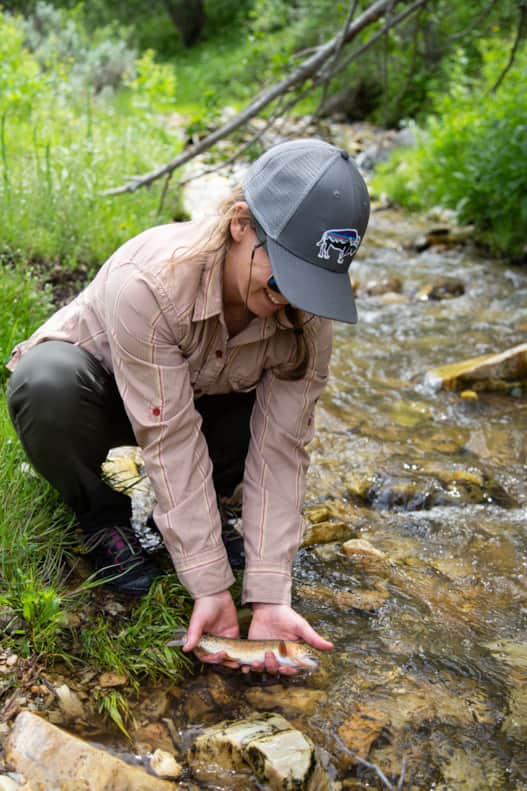
The Cutthroat Slam’s purpose is to promote the value of native species and for anglers to explore new places they haven’t fished.
Photo: Rosie Serago
Cast Right Over There
After scouting the location the night before, now it’s early morning and we’re winding down the road through an aspen grove. We cross a small stream and park the cars. Here there are no signs of arrival, no instructions or waypoints, just a faint trail following a ditch of water. After ducking through several canopies, there was a more obvious trail just after the creek crossing.
The sun is out, and cicadas are serenading us as we march in line. More canopy. I can see the damn fish right there in the water. I can’t even maneuver myself through this jungle let alone a rod with a line and a hook. Brett pauses when we see a large rock with a hole and four to five fish in there. “Stay there on the other side of rock and I’ll guide you to drop your line,” he says.
“What the hell did I get myself into?” I probably say aloud. I’m already annoyed. I hover my line over the water as Brett directs me, as I am behind the line of sight.
“Left! Little more right! Set!” Brett’s excitement is contagious. I feel the hit but can’t see the water or the fish so I have no idea what’s happening. Was that a fish or a stick? I’m a regular at catching the ol’ “stick bass.” “They are coming out again. Cast it back,” he guides. “Right! Towards me more. Lower the line. Set!”
“Damn it!” I set it all right, but it’s more like I sent it straight into the bush above. “This is so hard!”
My audience is right there with me, driven by anxiety and excitement. That snag was it, though. I retrieve the fly and, in turn, spook the fish and move on. Defeat. Canopy. Creek is getting narrower. Where is the next opening?
Walking up stream, we find another hole that I would finally call castable, fishable for my beginner skills. A pretty decent-sized fish flashed us some color. “Oh man. Imma get this one,” I say.
Brett walks me through the steps, cheering and guiding me on. “Stand right here. Cast right over there by that log.”
Yes, that’s what I was trying to do. I see the fish move up towards the fly. “Set!” Nope. Again. Cast out by the log. He or she is a beauty, and it comes in for the bite and “Set!” YES! He’s on. Pull, pull, SNAP. He’s gone. [Insert expletive vomit with many apologies to readers.] It’s time to move on again. Canopy. Narrower. Junglier. So. Annoying. Find. Positivity.
"The sun is out, and cicadas are serenading us as we march in line. More canopy. I can see the damn fish right there in the water."
Fishing for Positivity
While I end up loving the challenge of learning new things, I’m not so great at the actual learning of new things. I get my head in a space of wanting to succeed so badly, I almost miss out on the experience it takes to get to that success.
Back in 2004, when I had just moved from New York City to Colorado, I decided I wanted to learn how to rock climb. My experienced friends took my husband and me up to a crag in Boulder Canyon where the “New York” in me would soon be released into the wild. Gearing up with harness, rope and shoes (in that order) I confidently — maybe even cockily? — made my way up the wall.
At the first crux, I was lost. I couldn’t make the move. I didn’t succeed, but I walked away not hating the experience. It could be that frustration and educational opportunity are something that ultimately drive me. I’ve had to learn how to take each moment as a learning experience through the comfort and discomfort, to get to know the people I am with and who are there to guide me and help me find success. (Read: "The Story of Utah Women Flyfishers")
Alongside the creek, I take the time to reset myself. Brett told me that back in the day, when pioneers of The Church of Jesus Christ of Latter-day Saints arrived in the Salt Lake Valley, it was too late in the season to cultivate the land. They lived off fish they caught in Utah Lake, where they caught 30-pound Bonneville cutthroat trout. It was how they survived and thrived through the winter, and ultimately that history led to Bonneville cutthroat becoming the state’s fish.
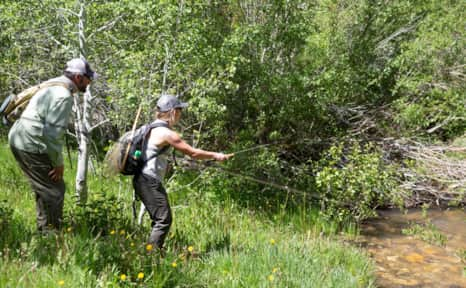
My audience is right there with me, driven by anxiety and excitement.
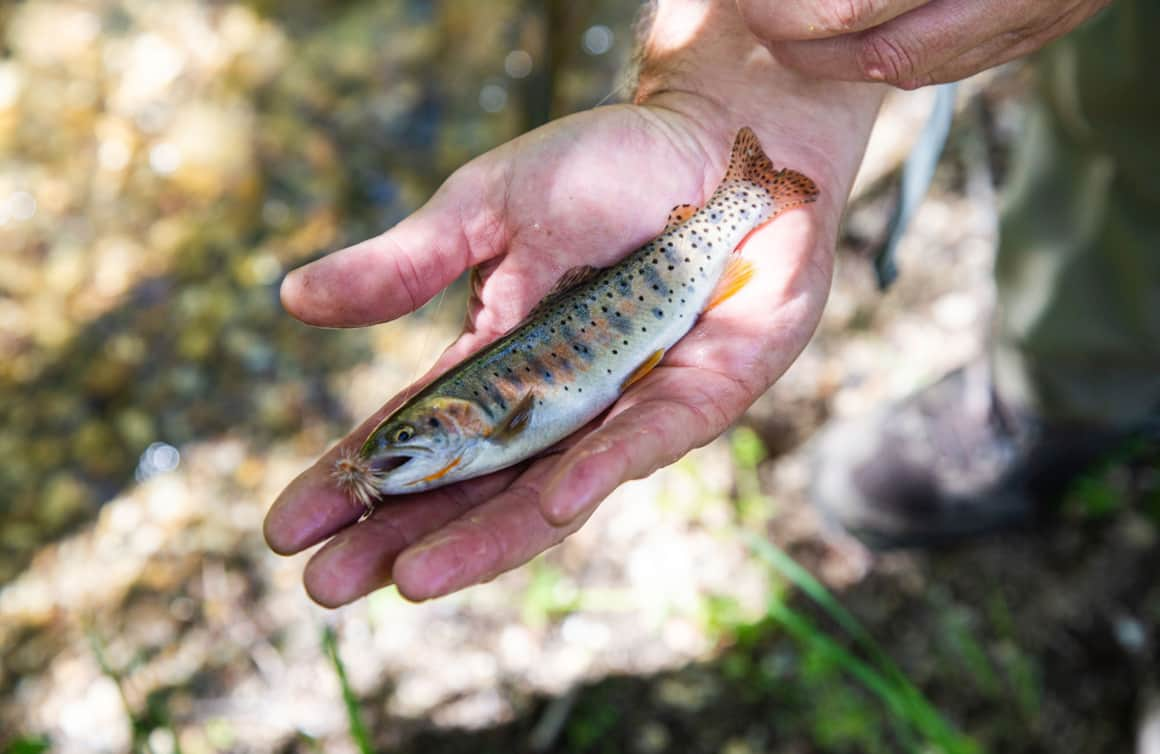
The Cutthroat Slam is an angling adventure to help enthusiasts find, catch and release the Bonneville, Bear River, Colorado and Yellowstone cutthroat species.
"I reel it in and there was most definitely no way this guy was escaping. Examining the beauty and feeling the relief of success — this is a true challenge — and it’s all the more rewarding when I get to revel in that moment."
Does It Even Count?
By this time, Rosie’s taking a snack break. We eat as we pass a few other holes while continuing upstream. Owen and Brett fish along in some, while Rosie and I keep walking. Here the trail rises above the creek to offer a view of the canyon we were in just in before we descended back down into the bush.
Then it appears: A 5-foot span where the canopy rises to about 8-feet with a deep hole in the bank.
“This is my zone!” It has to be. Cast. Snap. Escape. “Ugh!” Reset. Breathe. Cast. Snap. Set! Success! Don’t lose it! “Yeeaahh! It’s happening!”
I reel it in and there was most definitely no way this guy was escaping. He nearly swallowed the fly and I use my hemostats to remove the barbless token from his throat. Examining the beauty and feeling the relief of success — this is a true challenge — and it’s all the more rewarding when I get to revel in that moment.
We continue upstream, taking my attitude adjustment with me, and find another spot to try. My new-found energy tells me to just give it a try. Cast one. Cast two. Snap. Set. “Oh yeah, another one!” I struggle to keep the slippery long boi in my hands, but manage a win to retrieve the fly. Another beauty, maybe even more colorful than the last. I am now at ease and remember that I am outside in the wilderness with no one else around, a rare gift in itself.
It’s probably cliche to most anglers, but the saying “That’s why they call it fishing and not catching” is one that I carry with me. Because I’m the kind of person who gets wrapped up in the catching, even though it’s my love of being outside and remote places that gets me out there in the first place.
I realize that even though I love, like, really love, success, if it’s not without hard work, focus and determination does it even count? And yes — catching is what makes the canopy, stress, stick bass, many expletives and cold beers all worth it. But the takeaway, even bigger than starting my Slam adventure, is the excitement and uncertainty that comes with the adventure. And maybe even learning something about myself along the way.


